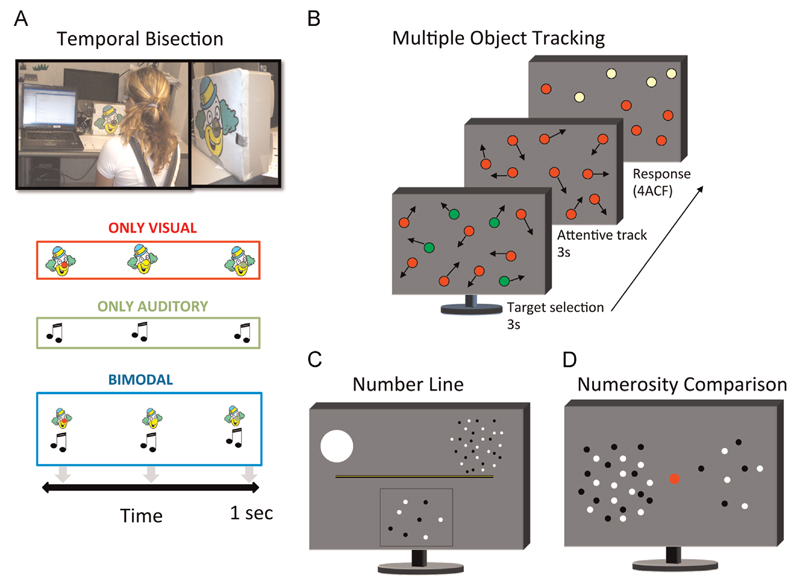Fig. 1.
Illustration of tasks and stimuli. (A) Temporal Bisection: Three stimuli (visual, auditory, or both) were presented in succession for a total duration of 1000 ms, and observers were required to indicate by button-press whether the middle stimulus appeared closer in time to the first or the third stimulus. In the vision-only task the subject perceived a sequence of three lights: the first always red, the second yellow and the third green. The subject had to respond whether the yellow light appeared closer in time to the first or the last. In the auditory task the subjects perceived a sequence of three sounds and the subject had to respond whether the second was nearest to the first or to the third. In the bimodal task the subject perceived a sequence of three lights associated with three sounds. (B) Multiple Object Tracking: Eleven disks, four green targets and seven red distracters, moved randomly on the screen (4°/s) for a period of 3 s. The green targets then turned red (like the distracters) and subjects track them for 3 s. They then identified (by touching the screen) which of four possible items (highlighted in yellow) was the target (4ACF). (C) Numberline: at the onset of each trial observers view a number line, marked at each end with a single dot to the left and 30 dots to the right. On key press, the dot stimulus appears, after 500 ms a binary pixel random-noise mask was displayed until subjects respond. Subjects touched the screen at the position on the numberline they thought corresponded to the dot cloud. (D) Numerosity Comparison: two patches of dots were briefly (500 ms) presented to both sides of a central fixation point. Subjects are asked to touch the side of the screen with more dots. (For interpretation of the references to color in this figure legend, the reader is referred to the web version of this article.)

